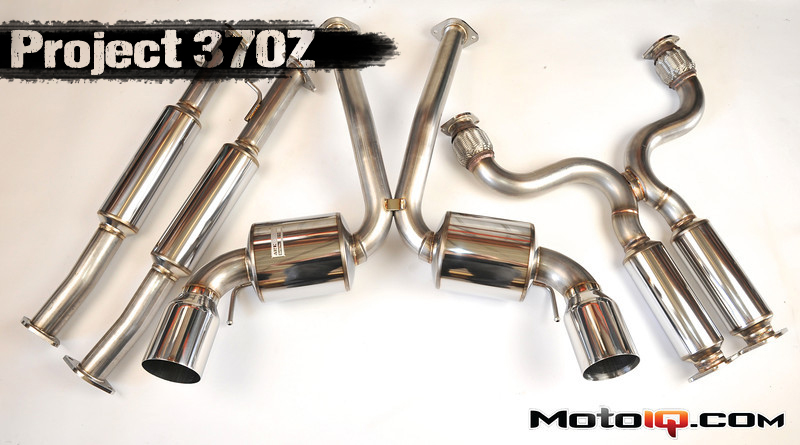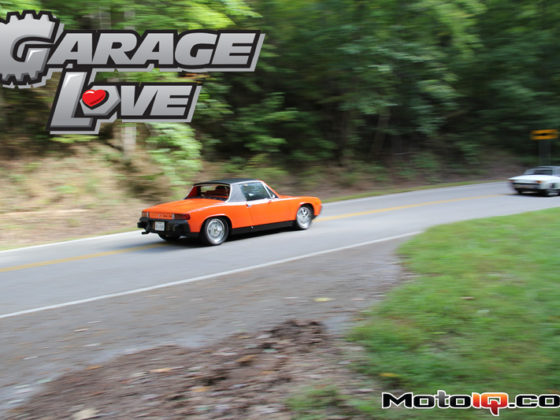Project 370Z – ARK Design Superflow Exhaust Test
So Project 370Z has not seen a power part upgrade since the first installment of the series which included the AEM “E.T.I.” cold air intake nearly 3 years ago. Despite the Fairlady’s solid power to weight ratio as it stands, a bit more power, sound, and weight reduction from an aftermarket cat back exhaust system was desired. With the help of ARK Design USA, the exhaust side of Project 370Z was going to see its first step in unlocking some power and performance oriented notes.
ARK Design was originally founded by Andy Chen and his primary partner Mr. R Kitazawa in 2005. From the company’s humble roots in Hachioji, Japan, the combination of Chen’s 10 years’ experience in the performance parts industry, and Kitazawa’s 15 years engineering experience put ARK Design on the map starting with electronic based products, then later exhaust systems. In early 2014, ARK Design established their USA office in southern California with the goal of targeting the performance aftermarket directly with high quality parts and electronics. In this article, we're testing out their “Super Flow” catback exhaust system on Project 370Z.
 The front section just behind the connections to the catalytic converters features an “H-Pipe” configuration to balance out exhaust pulses. Most of the aftermarket dual exhaust systems for the Z run “X-pipe” style merge pipes. The general rule of thumb is that H-pipes tend to offer a lower, deeper rumble sound to them, while X-pipes are more of a higher pitch, seamless tone. The TIG welds are high quality and precise. You can google arguments all day about which setup, H or Y, makes more power and where in the RPM range. In the end, for the most part it comes down to what kind of sound you prefer.
The front section just behind the connections to the catalytic converters features an “H-Pipe” configuration to balance out exhaust pulses. Most of the aftermarket dual exhaust systems for the Z run “X-pipe” style merge pipes. The general rule of thumb is that H-pipes tend to offer a lower, deeper rumble sound to them, while X-pipes are more of a higher pitch, seamless tone. The TIG welds are high quality and precise. You can google arguments all day about which setup, H or Y, makes more power and where in the RPM range. In the end, for the most part it comes down to what kind of sound you prefer. Behind the “H-pipe” connector is the first pair of perforated core, straight through design resonators. These being located toward the front of the car should help keep the infamous “VQ engine rasp” at bay that is so prevelent when switching to aftermarket exhaust systems on VQ based NIssan platforms.
Behind the “H-pipe” connector is the first pair of perforated core, straight through design resonators. These being located toward the front of the car should help keep the infamous “VQ engine rasp” at bay that is so prevelent when switching to aftermarket exhaust systems on VQ based NIssan platforms. Flex joint sections right behind the front flanges help to counter any engine movement that could potentially loosen hardware or cause cracks. Having such a flex pipe also helps to keep unwanted torque off the cats and headers.
Flex joint sections right behind the front flanges help to counter any engine movement that could potentially loosen hardware or cause cracks. Having such a flex pipe also helps to keep unwanted torque off the cats and headers. The rear section of the system features a very simple design that is both efficient and light weight. The mufflers are robust but short in over all length. The whole piece was easy for me to pick up and move around despite my 125lb personal curb weight.
The rear section of the system features a very simple design that is both efficient and light weight. The mufflers are robust but short in over all length. The whole piece was easy for me to pick up and move around despite my 125lb personal curb weight.



